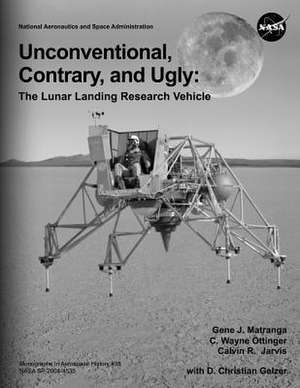Unconventional, Contrary, and Ugly
Autor National Aeronautics and Administration, Gene J. Matranga, C. Wayne Ottingeren Limba Engleză Paperback
Preț: 168.25 lei
Nou
Puncte Express: 252
Preț estimativ în valută:
32.19€ • 33.62$ • 26.58£
32.19€ • 33.62$ • 26.58£
Carte disponibilă
Livrare economică 25 martie-08 aprilie
Preluare comenzi: 021 569.72.76
Specificații
ISBN-13: 9781493794454
ISBN-10: 1493794450
Pagini: 242
Dimensiuni: 216 x 279 x 13 mm
Greutate: 0.57 kg
Editura: CREATESPACE
ISBN-10: 1493794450
Pagini: 242
Dimensiuni: 216 x 279 x 13 mm
Greutate: 0.57 kg
Editura: CREATESPACE
